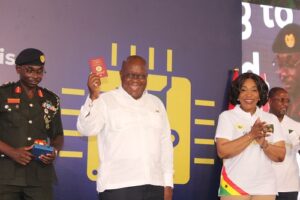
The crown was swiftly and quietly transferred to the heir, Charles, the former Prince of Wales, upon the death of the Queen.
However, he must first complete a variety of practical and customary requirements before being anointed King.
What name will he go by?
Making the decision to rule as King Charles III or to assume a different name is one of his first actions.
For instance, although George VI, his grandfather, ruled using one of his middle names, his initial name was Albert. Charles Philip Arthur George might pick from any of his four names.
He is not the only one who will have his title changed.
Prince William will not automatically become Prince of Wales despite being the heir to the throne. But the Duke of Cornwall, his father’s second title, is immediately his. The Duchess of Cornwall will be the title given to his wife Catherine.
Charles’ wife will also get a new title; her full name will be Queen Consort, which is how the monarch’s spouse is referred to.
Official Events
Charles will be formally crowned King within the first few days following the passing of his mother. This takes place in front of the Accession Council, a ceremonial council, in St. James’ Palace in London.
This is a group of senior lords and MPs from the Privy Council, as well as certain high-ranking government workers, Commonwealth high commissioners, and the Lord Mayor of London.
Although there is a theoretical cap of more than 700 attendees, the real number will probably be far lower given the short notice. About 200 people attended the final Accession Council in 1952.
It is not customary for the King to attend.
The Lord President of the Privy Council, who is now Penny Mordaunt MP, will inform the gathering of Queen Elizabeth’s passing and deliver a proclamation.
The proclamation’s text is subject to change, but historically it has consisted of a number of prayers and promises endorsing the outgoing monarch and promising support for the incoming one.
Senior leaders such as the prime minister, the archbishop of Canterbury, and the Lord Chancellor then sign this proclamation.
As with all of these ceremonies, special attention will be given to any changes that may have been made to mark the beginning of a new period.
The King’s First Declaration
The King and the Privy Council will be present when the Accession Council meets again, generally a day later.
In contrast to certain other heads of state, such the US President, the British monarch is not “sworn in” at the beginning of their reign. But according to a practice that dates back to the early 18th century, the new King has made a vow that he will swear to uphold the Church of Scotland.
A public declaration naming Charles as the new King will be made following a trumpet fanfare. This will be performed by a representative known as the Garter King of Arms from a balcony above Friary Court at St. James’s Palace.
For the first time since 1952, the national anthem will begin with the lyrics “God Save the King” as he calls out “God save the King.”
In addition to reading the proclamation declaring Charles as the King in Edinburgh, Cardiff, and Belfast, gun salutes will be fired in Hyde Park, the Tower of London, and from naval ships.



Your point of view caught my eye and was very interesting. Thanks. I have a question for you.
Can you be more specific about the content of your article? After reading it, I still have some doubts. Hope you can help me.
Your point of view caught my eye and was very interesting. Thanks. I have a question for you.